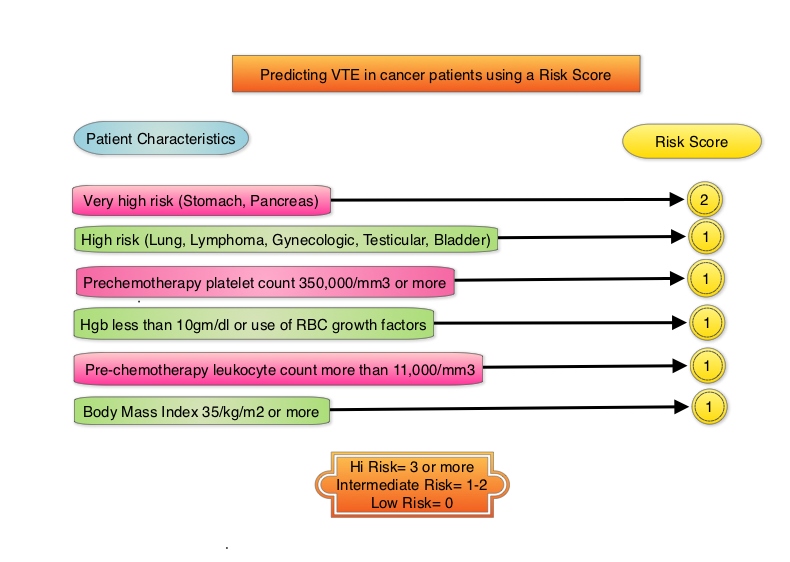SUMMARY: The 2013 Top five list in Oncology was published to optimize the use of diagnostic and therapeutic modalities and enhance patient care, by following evidence-based guidelines, thereby providing cost-effective medical care.
1) Do not give patients starting a chemotherapy regimen that has a low or moderate risk of causing nausea or vomiting antiemetic drugs intended for use with a regimen that has a high risk of causing nausea or vomiting.
Highly emetogenic chemotherapy: The recommendations are a three drug combination of an NK1 receptor antagonist given on days 1-3 for oral Aprepitant (EMEND®) or IV EMEND® given on Day 1 only, a 5-HT3 receptor antagonist given on day 1 only and Dexamethasone (DECADRON®) given on days 1-3 or 4.
Moderately emetogenic chemotherapy: A two drug combination of Palonosetron (ALOXI®) given on day 1 only and DECADRON® given on days 1-3 is recommended. Even though ALOXI® is the preferred agent, a first-generation 5-HT3 serotonin receptor antagonist such as Granisetron (KYTRIL®) or Ondansetron (ZOFRAN®) may be substituted if it is not feasible to give ALOXI®.
Low emetogenic chemotherapy: A 5-HT3 serotonin receptor antagonist is recommended. Patients experiencing nausea and vomiting while on Radiation therapy may need prophylaxis with these agents throughout the course of their therapy.
2) Do not use combination chemotherapy (multiple drugs) instead of chemotherapy with one drug when treating an individual for metastatic breast cancer unless the patient needs a rapid response to relieve tumor-related symptoms.
Combination chemotherapy for metastatic Breast Cancer is only recommended when a patient has significant symptoms related to tumor burden and a rapid tumor response is needed for symptom palliation. Because combination chemotherapy can be associated with significant toxicity without improvement in overall survival (OS), it is recommended that single agent therapy given sequentially reduces the risk of toxicity besides allowing optimal drug delivery and could improve quality of life, without compromising OS. It should be noted however that in tumors overexpressing a specific biomarker such as HER 2, anti–HER 2 therapy in combination with cytotoxic chemotherapy can improve survival compared with chemotherapy alone. Patients with hormone receptor–positive tumors should receive sequential endocrine therapies before cytotoxic chemotherapy, in the absence of life threatening organ dysfunction. Combining cytotoxic chemotherapy with an anti-hormonal agent is not beneficial. Rapid symptom palliation using Radiation treatment, insertion of a stent, surgical intervention, etc., if more efficacious, has to be considered under appropriate circumstances, before initiating chemotherapy.
3) Avoid using positron emission tomography or positron emission tomography–computed tomography scanning as part of routine follow-up care to monitor for cancer recurrence in asymptomatic patients who have finished initial treatment to eliminate the cancer unless there is high-level evidence that such imaging will change the outcome.
Once staging and restaging is complete, routine surveillance using PET or PET-CT scanning for solid tumors and lymphomas remains unproven and is not recommended. This has been validated in multiple studies and has been endorsed by cancer organizations both in the U.S. and abroad.
4) Do not perform prostate-specific antigen testing for prostate cancer screening in men with no symptoms of the disease when they are expected to live fewer than 10 years.
Elevated levels of PSA can be associated with conditions other than Prostate Cancer such as Benign Prostate Hyperplasia. Even though men who undergo PSA testing are less likely to die specifically as a result of prostate cancer, when all cause mortality is taken into consideration, men undergoing PSA screening do not live any longer than those who do not undergo screening. If the life expectancy of an individual is less than 10 years based on medical conditions, PSA screening is unlikely to benefit this individual, as there is a greater probability of dying as a result of the underlying medical problems rather than asymptomatic prostate cancer. The US Preventive Services Task Force, American College of Physicians, American Urological Association, have all changed their recommendations in accordance to these findings.
5) Do not use a targeted therapy intended for use against a specific genetic aberration unless a patient’s tumor cells have a specific biomarker that predicts an effective response to the targeted therapy.
Targeted therapy is expensive and can be associated with toxicities, but can benefit patients significantly if their tumor cells demonstrate the specific gene alteration that makes the tumor cells susceptible to the targeted therapy. Usually, a specific biomarker is present in the tumor cells that may in turn predict effectiveness of the targeted therapy. Exceptions include high level evidence supporting the use of a targeted agent despite absence of the biomarker. It is recommended that targeted agents be used only as intended.
Schnipper LE, Lyman GH, Blayney DW, et al. J Clin Oncol 2013;31:4362-4370

